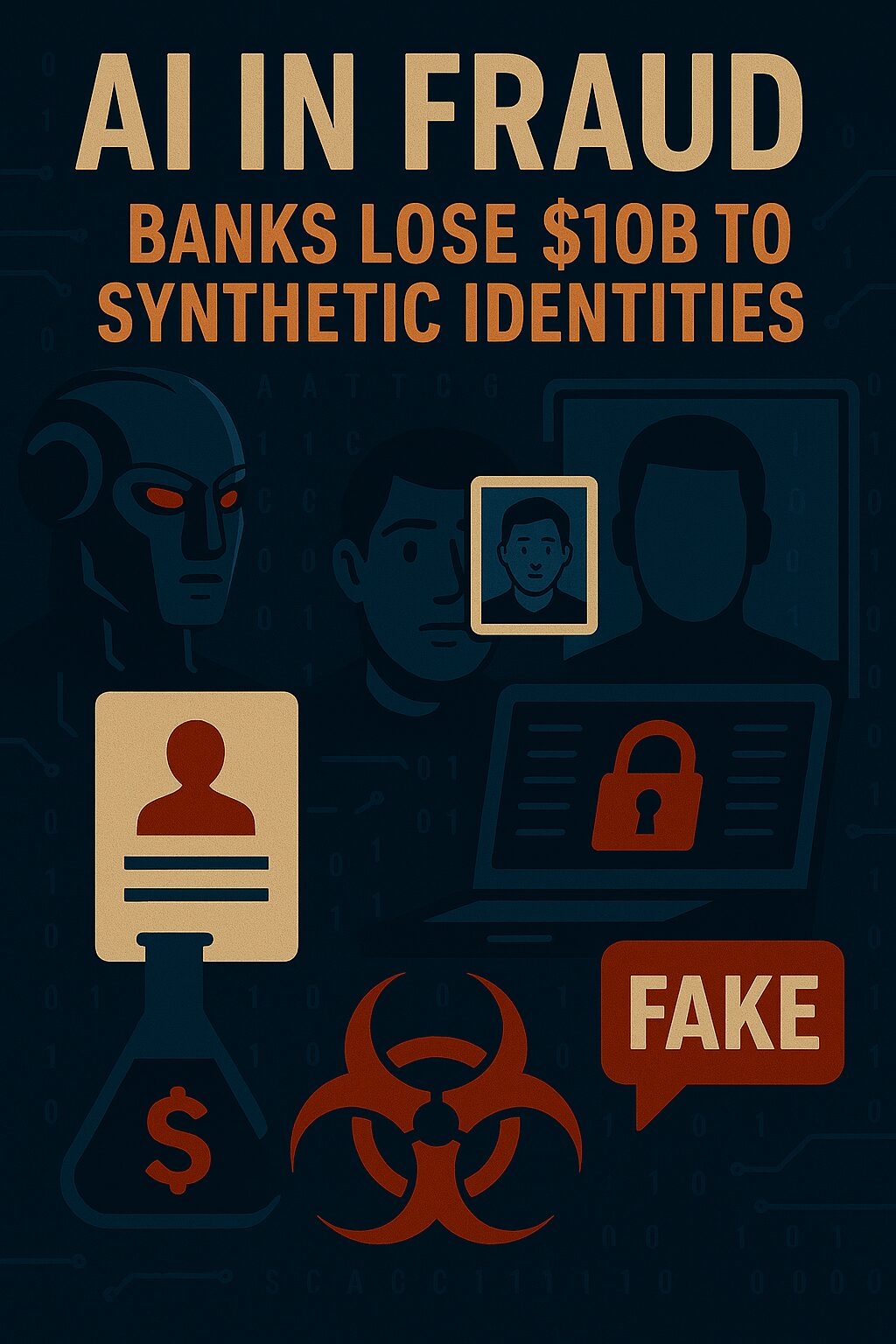Introduction: The Rise of Invisible Criminals
In 2025, artificial intelligence isn’t just powering innovation—it’s fueling deception. Banks and financial institutions have lost over $10 billion to synthetic identity fraud, a crime where AI-generated personas bypass traditional security systems and exploit digital onboarding processes. These aren’t stolen identities—they’re fabricated ones, built from scratch by algorithms trained to mimic real human behavior.
🤖 What Is Synthetic Identity Fraud?
Synthetic identity fraud involves the creation of fictitious identities using a blend of real and fake information. AI models now automate this process, generating:
- 🧬 Realistic names, birthdates, and addresses
- 📱 Deepfake selfies for biometric verification
- 🧠 Behavioral patterns that pass fraud detection systems
- 🧾 Fake employment and credit histories
Unlike traditional identity theft, synthetic identities don’t belong to real people—making them harder to detect and nearly impossible to trace.
📈 Why AI Is Supercharging Financial Fraud
| AI-Driven Factor | Impact |
|---|---|
| 🧠 Generative Models | Create realistic documents and personas at scale |
| 📸 Deepfake Technology | Bypass biometric authentication systems |
| 🧰 Automated Onboarding Hacks | Exploit weaknesses in digital KYC and AML protocols |
| 🌐 Dark Web Integration | Combine stolen data with synthetic profiles for hybrid fraud |
According to , over 50% of banks and fintechs reported a surge in synthetic identity fraud, with some institutions facing over 10,000 fraud attempts annually.
💸 The $10B Fallout: How Banks Are Bleeding
Synthetic identities are used to:
- Open bank accounts
- Apply for credit cards and loans
- Launder money through legitimate channels
- Commit transaction fraud and chargebacks
Because these identities often build credit slowly before striking, they evade detection for months—sometimes years. The result? Massive financial losses and reputational damage.
🛡️ How Banks Can Fight Back in 2025
✅ AI vs. AI Defense
- Deploy machine learning models to detect synthetic behavior
- Use anomaly detection to flag unusual account activity
- Implement biometric liveness checks to counter deepfakes
🔐 Strengthen Digital Onboarding
- Require multi-factor authentication
- Cross-verify identity data with trusted third-party sources
- Monitor device fingerprints and geolocation inconsistencies
📚 Educate & Collaborate
- Train staff to recognize synthetic fraud patterns
- Share threat intelligence across institutions
- Partner with cybersecurity firms for proactive defense
🔑 SEO Keywords to Target
- AI in financial fraud 2025
- synthetic identity theft
- deepfake banking scams
- AI-generated personas
- fraud detection in fintech
- biometric authentication risks
- $10B bank fraud losses
🧭 Conclusion: The War on Synthetic Reality
In 2025, the most dangerous criminal may not have a face, a fingerprint, or a past. Synthetic identity fraud powered by AI is rewriting the rules of financial crime—and banks must evolve or be erased.

